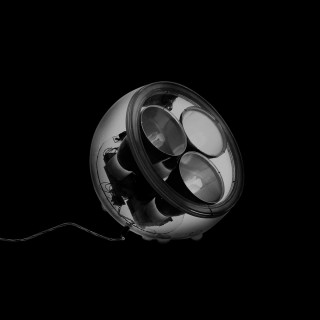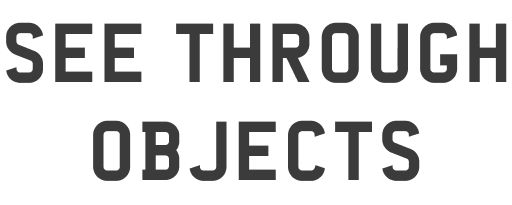- Manufacturer: Artemide
- Designer: Carlotta de Bevilacqua
- Material: methacrylate, polycarbonate
- Dimensions: 31 × 40 cm
- www.artemide.com

Index
- Materials The structure of Yang is from methacrylate and transparent polycarbonate. The six feet and the spherical shape of the luminaire make it possible to va
- Manufacturer Artemide is a design-oriented Italian manufacturer founded by Ernesto Gismondi and Sergio Mazza in 1958. Based in Pregnana Milanese, a suburb of Milan
- See Through Objects Apple's use of translucent candy-colored plastics inspired similar designs in other consumer devices. For example, grilling machines, portable electro
- Sad Seasonal Affective Disorder A type of winter depression that affects an estimated 7% of the UK population every winter between September and April; in
- Colour Theory and Therapy In the visual arts, color theory is a body of practical guidance to colour mixing and the visual impacts of specific colour combinations. The human ey
The structure of Yang is from methacrylate and transparent polycarbonate. The six feet and the spherical shape of the luminaire make it possible to vary its position. Three spots with dichroic filters in red, blue and green generate infinite light atmospheres. The closing lens is squeezed in, in order to easily relamp. The built-in anti-dazzling screen produces a scattered white or coloured light […] and with the aid of a built-in dimmer with microprocessor you can call in ten standard light atmospheres as well as ten more to adjust the light intensity (good morning, relax, energy, working, idea, balance, relation, play, love and dream). A display shows the chosen light mood.
- Compact fluorescent TC-TEL - GX 24 q-4 42W
- Type: 3.200 lm.
- Socket: GX 24 q-4
- Mains voltage: 230/240V
- Power supply: 42W
- Lamp codes: TC-TEL
- www.nostraforma.com/artemide-yang-tablefloor-lamp-p-1486.html
- www.architonic.com/pmsht/yang-artemide/1009466
Polycarbonates are a particular group of thermoplastic polymers. They are easily worked, moulded, and thermoformed; as such, these plastics are very widely used in the modern chemical industry. Their interesting features (temperature resistance, impact resistance and optical properties) position them between commodity plastics and engineering plastics. Their plastic identification code is 7.
Artemide is a design-oriented Italian manufacturer founded by Ernesto Gismondi and Sergio Mazza in 1958. Based in Pregnana Milanese, a suburb of Milan, the company specialises in the manufacture of lighting designed by famous international designers and architects.
The 'Human Light' is the guiding philosophy of Artemide, its way to imagine and design light, a revolutionary intuition that radically changed the way of conceiving lighting equipment based on man and his well-being.
The front line of Artemide research all pieces that create an illumination fitting: innovative illumination sources; the use of eco-compatible materials; quality control systems; the pursuit of the happiness.
Awards: Premio Compasso d'oro – 1967, 1989, 2004;
Product design awards – 1987, 2002, 2006;
Red Dot Design – 1999, 2001, 2002, 2004 (2), 2005, 2006, 2007, 2008 (2), 2009(3).
Artemide has always collaborated with the most famous international designers and actively promotes workshops with design schools (for example the Royal College of Art, London) in order to find the best young talent.
Apple's use of translucent candy-colored plastics inspired similar designs in other consumer devices. For example, grilling machines, portable electronics, pencil sharpeners, video game consoles and peripherals (including the Nintendo 64, which was released in special edition 'Funtastic' colours) featured the translucent plastic. Apple declared that 'the back of our computer looks better than the front of anyone else's.'

Seasonal Affective Disorder
A type of winter depression that affects an estimated 7% of the UK population every winter between September and April; in particular during December, January and February. It is caused by a biochemical imbalance in the hypothalamus due to the shortening of daylight hours and the lack of sunlight in winter.
Seasonal affective disorder affects approximately 5% of the population, and the number increases the farther north you move. Although results have experienced mixed reviews, there is evidence to suggest that colour therapy can alleviate some SAD symptoms. [Leanne Brownoff, Canwest News Service.]
In the visual arts, color theory is a body of practical guidance to colour mixing and the visual impacts of specific colour combinations.
The human eye can see 7,000,000 colors. Certain colours and colour relationships can cause headaches and wreak havoc with human vision. Other colours and colour combinations are soothing. Consequently, the appropriate use of colour can maximize productivity, minimize visual fatigue, and relax the whole body.
- RED is reputed to be good for the muscular system and left cerebral brain hemisphere.
- YELLOW cleanses the blood stream, stimulates the lymphatic system and energizes the alimentary tract.
- ORANGE is good for mental exhaustion and rheumatism.
- GREEN is said to help with asthma, hay fever, laryngytis and malaria.
- BLUE treats hysteria, and lessens nervous excitement.
- VIOLET aids epilepsy.
There are increasing numbers of documented experiments showing the effects of light and colour on the human body. Soviet Russian scientists claim that colour therapy with red light increases muscular activity, blood pressure, respiration and heart rate.
Blue has the opposite effect reducing blood pressure and being helpful in cases of insomnia. Blue light is used in hospitals to treat jaundice in new born babies. It is said to be a good colour therapy for children when teething or infection upsets them. It also leads to a decrease in blood sugar and seems to help in some cases of eczema.
The Sunfield Childrens Home at Stourbridge, England treats children through colour therapy or chromotherapy, as it is also known. Rudolf Steiner Waldorf Schools have from their earliest beginnings been acutely aware of the importance of the arts and colour therapy in education. Class teachers in such schools paint classrooms to reflect the 'soul mood' of the children at their particular stage of development. The first year classroom is always red. The classroom therapy colours change as the pupils progress through the school.
Colour therapy doesn't just have an effect on our mood it is becoming ever clearer that it also influences our physiology.





























































































